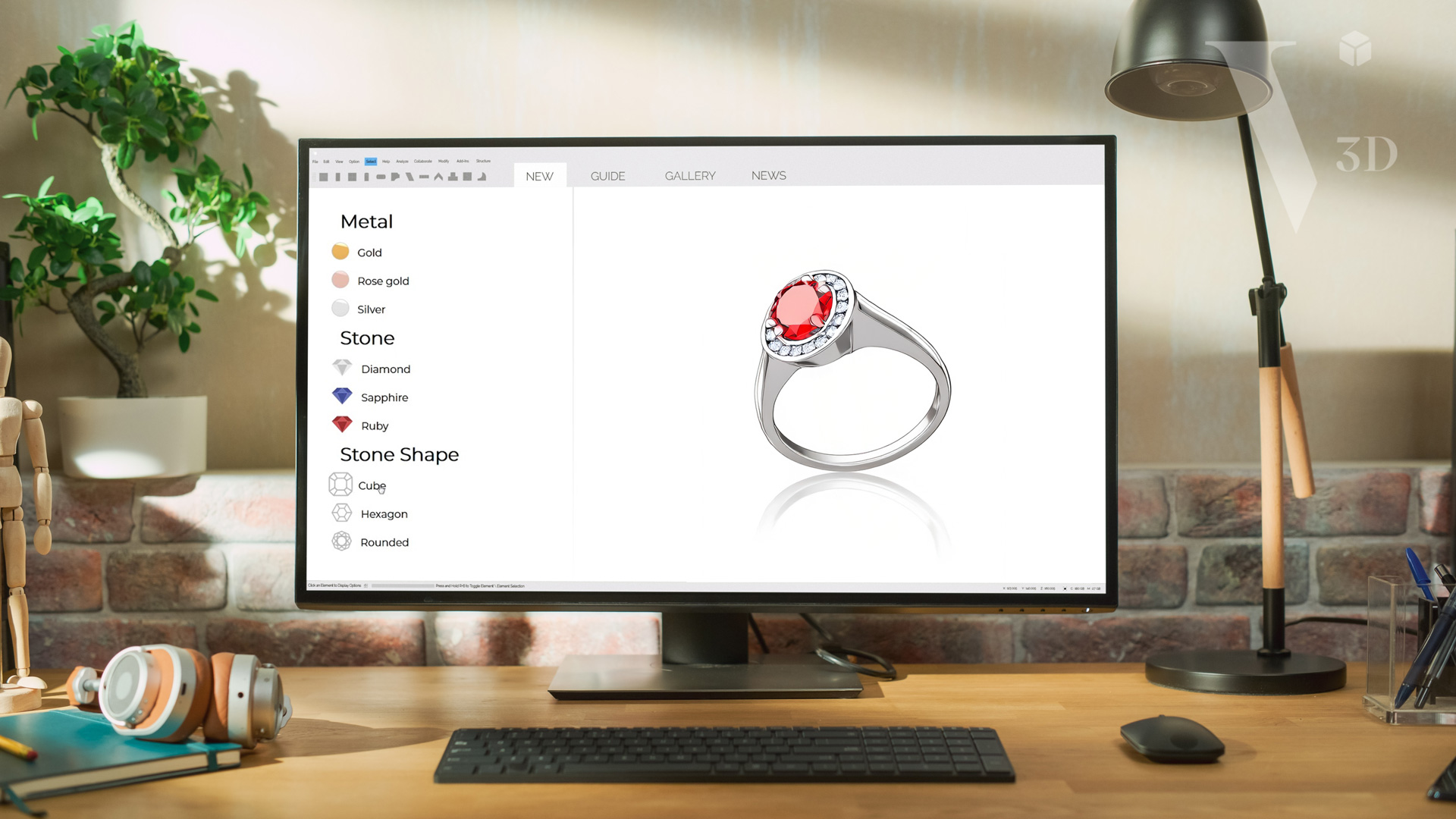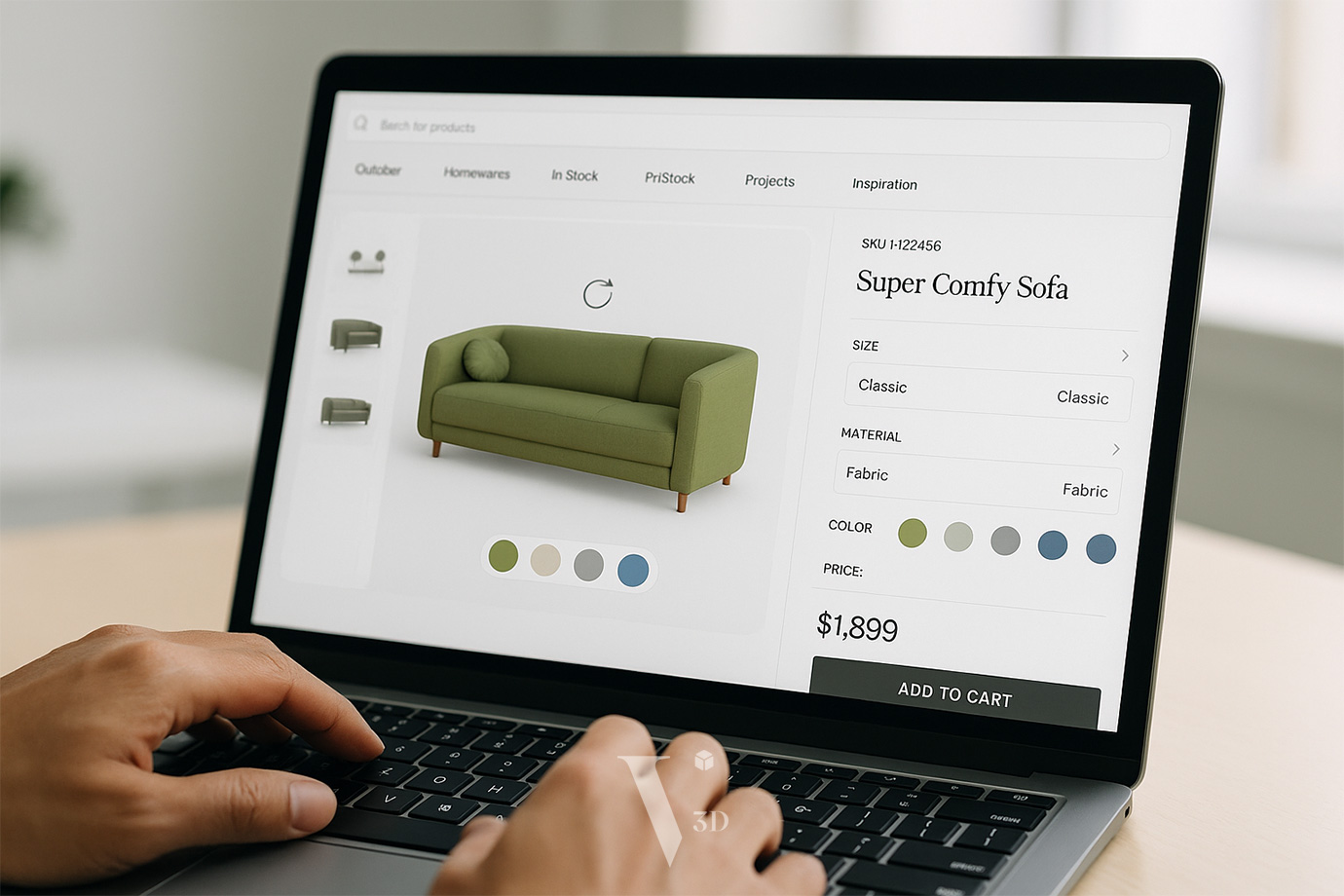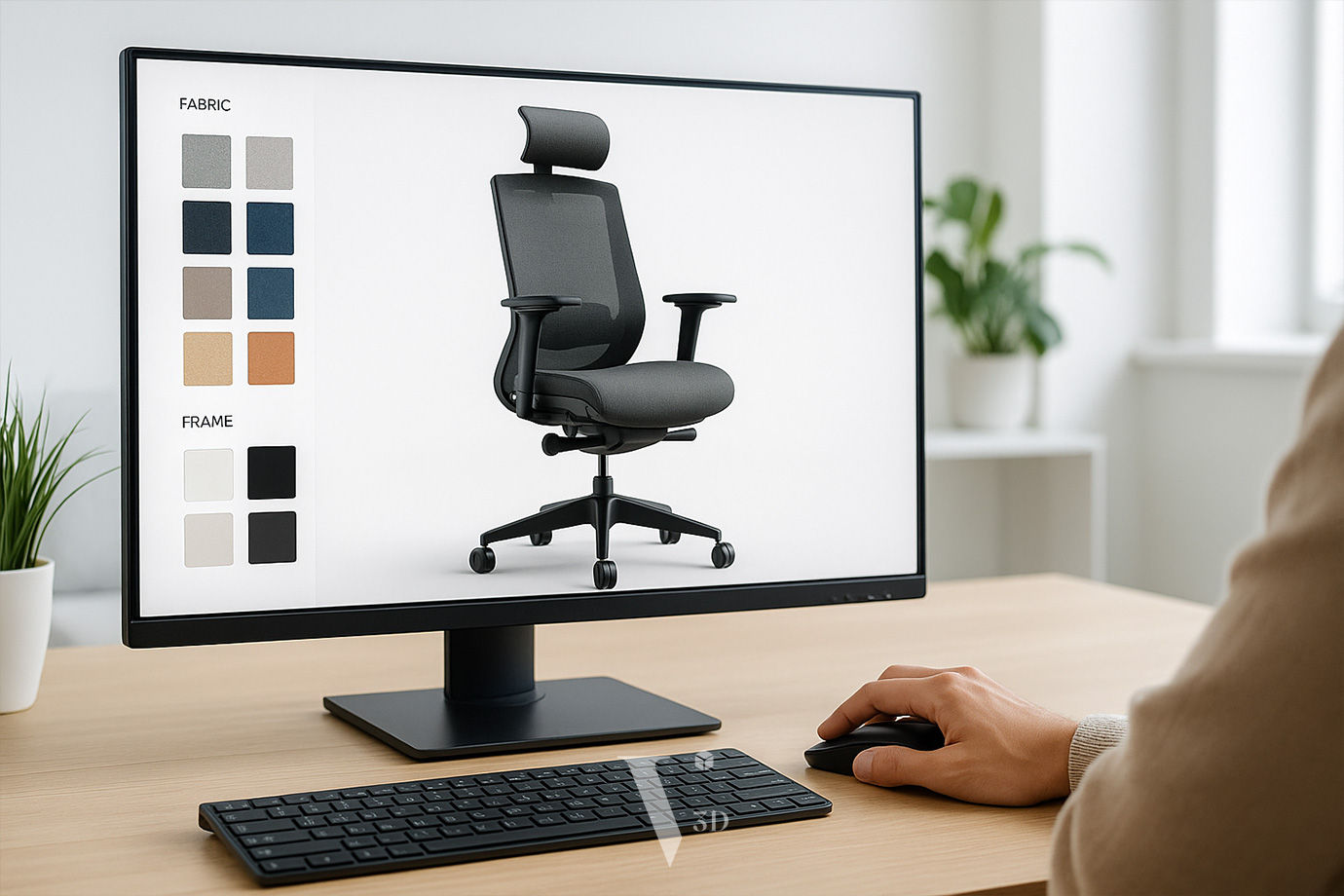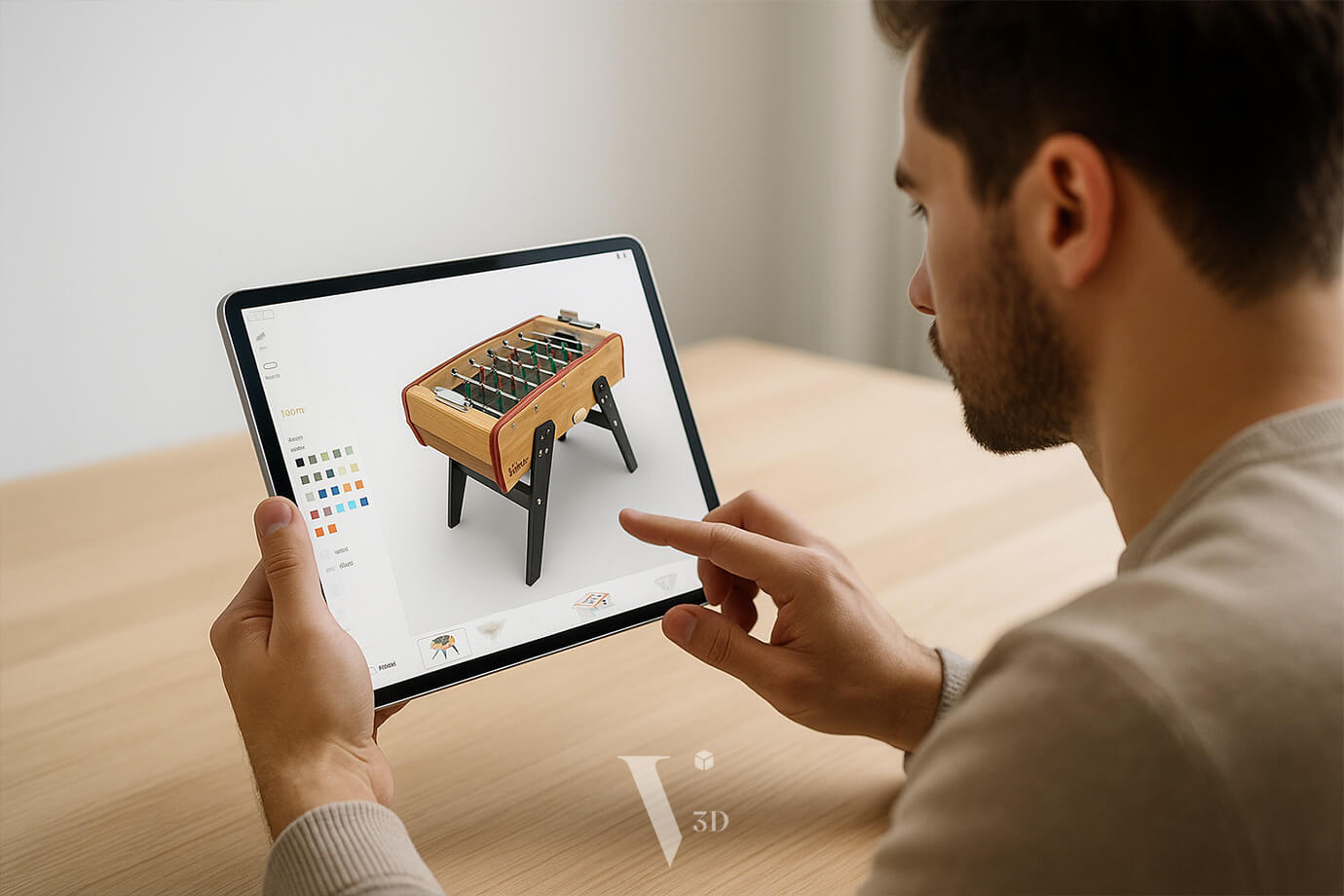
In today’s fast-evolving digital landscape, technology is transforming industries at an unprecedented rate. One area where this transformation is particularly apparent is in the realm of jewelry shopping. The advent of a 3D jewelry configurator allows customers to design and visualize their own custom pieces in a way that was unimaginable just a few years ago.
Gone are the days when shoppers had to rely solely on traditional renderings or vague descriptions. With advanced 3D visualization tools, customers can now interactively create bespoke jewelry items, tailoring them according to personal preferences, which makes the entire shopping experience more engaging and satisfying.
Understanding the Technology Behind 3D Jewelry Configurators
The core of a 3D jewelry configurator lies in its sophisticated technology, melding together elements of 3D modeling, visualization software, and user-friendly interfaces. This technology is not merely about aesthetics; it enhances user experience by allowing a level of personalization previously unseen in the jewelry retail sphere.
What is 3D Modeling?
3D modeling is the process of creating a representation of an object using specialized software. This involves defining the object’s shape, size, texture, and color in a three-dimensional space.
In the context of jewelry, skilled artisans or designers use various software applications such as Blender, Rhino, or CAD to create detailed models of rings, necklaces, bracelets, and even intricate pendants. These virtual designs encapsulate every detail that a customer may desire, from the choice of metals to gemstones, providing an incredibly realistic preview of what the final product will look like.
The precision offered by modern 3D modeling is crucial in jewelry design, where minute details often make a significant impact on the overall appeal and value of a piece. With this technology, designers can experiment freely, making real-time changes to enhance or modify a design based on immediate feedback.
Visualization Software
The next step in the 3D jewelry configurator journey is the visualization software that translates these 3D models into interactive experiences for users. Customers can rotate, zoom in, and view their jewelry designs from multiple angles and perspectives.
This immersive experience allows customers to see how light interacts with the chosen materials, how the colors complement each other, and how the jewelry looks on a virtual model. It’s akin to trying on jewelry without ever leaving your home, giving confidence to customers in their purchase decisions.
By utilizing high-quality rendering techniques, the visualization software aims to produce life-like images. This means that users can focus on the finer details such as the shine and sparkle of diamonds or the matte finish of brushed gold – factors that significantly influence the buying decision.
User-Friendly Interface
One of the most vital components of a successful 3D jewelry configurator is its user interface (UI). An intuitive UI allows users of all ages and tech-savviness to navigate through the configurator effortlessly.
A well-designed UI typically includes several features: easy-to-understand menus, drag-and-drop options for selecting gemstones, and sliders for adjusting size and dimensions. The goal is to eliminate any barriers that may hinder creativity, enabling users to bring their unique vision to life.
Moreover, responsive design ensures the configurator works seamlessly across various devices, including smartphones, tablets, and desktop computers. This versatility guarantees that shoppers can explore their creative side from anywhere, anytime.
Explore the 3D Configurator Now
The Benefits of Using a 3D Jewelry Configurator
Integrating a 3D jewelry configurator into the jewelry shopping experience presents numerous advantages for both consumers and retailers alike. These benefits extend beyond mere aesthetics, impacting the entire purchasing journey.
Personalized Shopping Experience
One of the most compelling reasons to utilize a 3D jewelry configurator is the unparalleled opportunity for personalization. Customers often have specific ideas in mind about what they want, whether it’s a wedding ring that symbolizes eternal love or a birthday gift crafted from a favorite gemstone.
The configurator empowers users to take control of the design process. They can choose the metal type, select stones based on color, clarity, and cut, and personalize engravings—all tailored to the recipient’s character and tastes. This level of customization fosters a deeper emotional connection between the buyer and the piece.
Additionally, personalized jewelry has increasingly become a trend, especially among millennials and Gen Z who favor unique items that reflect their individual styles. A 3D jewelry configurator caters to this demand, allowing people to create one-of-a-kind treasures that stand out in a sea of mass-produced products.
Cost Transparency
Traditional jewelry shopping often leaves consumers confused about pricing. Factors like labor costs, material quality, and brand reputation can complicate understanding the final price of a piece. In contrast, using a 3D jewelry configurator introduces transparency throughout the purchasing process.
As customers design their jewelry, they can see how different combinations of materials and stones affect the total cost in real time. This visibility allows for informed decision-making and budget management, helping buyers determine what fits their financial constraints while still achieving their desired outcome.
Moreover, many configurators provide simulations of the manufacturing process, giving insight into how different choices impact production timelines and costs. Such transparency builds trust between the customer and the retailer, enhancing the overall shopping experience.
Enhanced Engagement and Satisfaction
Shopping for jewelry should be an enjoyable and exciting experience, but conventional methods sometimes lead to frustration, particularly when the final product does not meet expectations. A 3D jewelry configurator addresses this issue by promoting enhanced engagement.
Users can spend time experimenting with various designs, allowing for exploration and creativity. This hands-on involvement makes the process much more gratifying compared to passively browsing through pre-made collections.
Furthermore, the satisfaction derived from seeing one’s creation come to life significantly increases the likelihood of repeat business. Customers who have enjoyed the customization process are more likely to return for future purchases or recommend the retailer to friends and family.
Reduced Returns and Exchanges
Returns can be a nightmare for both consumers and retailers. Dissatisfaction with a product often leads to costly returns and exchanges, affecting overall profitability. However, a 3D jewelry configurator minimizes this risk by ensuring customers know exactly what they’re getting before placing an order.
With the ability to visualize every aspect of their design, users can make more informed choices, reducing the chances of disappointment upon receiving the final product. Retailers benefit from this reduction in return rates, ultimately leading to a healthier bottom line.
Real-World Applications of 3D Jewelry Configurators
Several companies have successfully integrated 3D jewelry configurators into their offerings, revolutionizing the shopping experience. Here are some notable examples:
Case Study: Blue Nile
Blue Nile, one of the largest online diamond retailers, leverages a robust 3D jewelry configurator that lets customers design their engagement rings from scratch. Users can select everything from center stones to side stones, settings, and even metal types.
This level of customization has propelled Blue Nile to the forefront of the online jewelry market. Their configurator emphasizes quality and education, offering videos and guides that help customers understand each component’s significance, thereby instilling a sense of confidence in their purchasing decisions.
Case Study: Gemvara
Gemvara uses a highly interactive 3D jewelry configurator that allows users to create their own jewelry from a variety of designs. What sets Gemvara apart is its commitment to ethical sourcing, ensuring customers feel good about their purchases.
Their configurator goes beyond just design; it integrates values and ethics into the experience, allowing shoppers to not only customize their jewelry but also to choose materials that align with their beliefs regarding sustainability and social responsibility.
Case Study: Tanishq
Tanishq, a renowned Indian jewelry brand, employs a 3D jewelry configurator that enables customers to engage with intricate Indian designs. By blending traditional craftsmanship with modern technology, Tanishq appeals to a diverse customer base.
Their configurator showcases cultural heritage while allowing users to bring contemporary flair into their designs. This fusion reflects an understanding of local customs and trends, making Tanishq a go-to brand for those seeking a personalized touch rooted in tradition.
Future Trends in Jewelry Customization
As technology continues to advance, the possibilities within the realm of jewelry customization are expanding rapidly. A 3D jewelry configurator serves as a gateway to exciting trends that could redefine the industry.
Integration of Augmented Reality
One emerging trend in the world of jewelry configurators is the integration of augmented reality (AR). This technology enhances the online shopping experience by allowing users to virtually “try on” jewelry pieces using their smartphones or tablets.
Imagine being able to see how a stunning pair of earrings looks on your ears or a bracelet wraps around your wrist without physically wearing them. AR technology eliminates guesswork, enabling customers to make better-informed decisions while boosting confidence in their customization choices.
Artificial Intelligence and Machine Learning
AI and machine learning are poised to play a critical role in the evolution of 3D jewelry configurators. These technologies can analyze consumer behavior and preferences, creating tailored recommendations that enhance the shopping experience.
For example, if a shopper frequently opts for bold gemstone colors, the configurator might suggest similar designs or complementary pieces. This personalized touch not only elevates the shopping experience but also encourages users to explore new styles they may not have considered otherwise.
Collaborative Design Features
Collaborative design features within configurators present opportunities for shared experiences. Imagine couples working together to design an engagement ring, allowing them to contribute to the creation of something meaningful and symbolic of their relationship.
Such collaborative features could involve live chats, video calls, or even multi-user sessions where friends or family members can weigh in during the design process. Creating a shared experience around jewelry-building would deepen emotional connections and amplify sentiments tied to the final piece.
Conclusion
The rise of the 3D jewelry configurator marks a pivotal moment in the jewelry shopping experience, transforming the way consumers design, visualize, and purchase their treasured pieces.
Through personalization, transparency, and enhanced engagement, this innovative technology elevates the jewelry shopping experience to new heights. As we move forward, we can expect continued advancements, pushing the boundaries of creativity and redefining how individuals express themselves through jewelry.
The potential for further innovations—ranging from augmented reality experiences to AI-driven recommendations—promises to provide an even more enriching experience for consumers.
In essence, this revolutionary approach not only empowers customers to create unique pieces but also aligns with evolving consumer demands for authenticity, individuality, and meaningful connections in their purchases. With the 3D jewelry configurator, the future of jewelry shopping is bright and brimming with possibility.
With the 3D product interaction solution provided by V3D, your sales team, agents, distributors, and potential customers can easily rotate, view, and customize 3D products on your website according to their preferences.
Share this post!

Nguyen Huynh (Rainer) - CEO of VMT Solution
As the Co-Founder and CEO of VMT Solutions, I earned my Master’s degree in Technical and Vocational Education and Training (TVET) from Germany in 2007. With over a decade of experience in point cloud processing and BIM services, I’ve always been passionate about tackling complex challenges and developing innovative workflows that enhance accuracy and detail in point cloud to BIM conversions.





